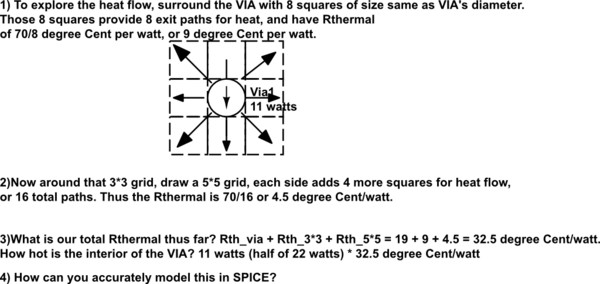A useful starting point for via-design is the thermal resistance of standard copper foil: 1 ounce of copper per square foot is 1.4 mils or 35 microns thick. Given that thickness, the thermal resistance, from one edge of a square to the opposite edge with heat flowing laterally thru the foil, is 70 degrees Cent per watt. For any size square.
If your PCB house will plate the via to 35 micron thickness, and if the via circumference is the same as the via height, that ratio is 1:1 and you have a square of copper lining the inside of that drill hole. Thus we know its thermal resistance from top to bottom. Turns out, with heat able to exit in both directions, the thermal path drops by 2:1, and the heat flowing in each path is only 50% of the internally-generated via-heat, so Rthermal drops 4X to 19 degrees Centigrade per watt, IF THE VIA HAS 1:1 circumference/height ratio.
Are you willing to have the via operate at 225 degree Cent? Then you can have 225/19 == 22 watts dissipated inside that via.
An square of 1 ounce/foot^2 copper foil has electrical resistance of 0.000500 ohms, or 500 microOhms. With P=I^2*R, we have 22watts = II/2000, or I = sqrt(44,000) or I = 200 amps. wow.
This requires keeping the visible edges of the via at 25 degree Cent. Seymour Cray solved those problems with immersion into liquid coolants.
How cool can we maintain those vias? Here is a heat-flow diagram, looking down on the PCB:

simulate this circuit – Schematic created using CircuitLab

